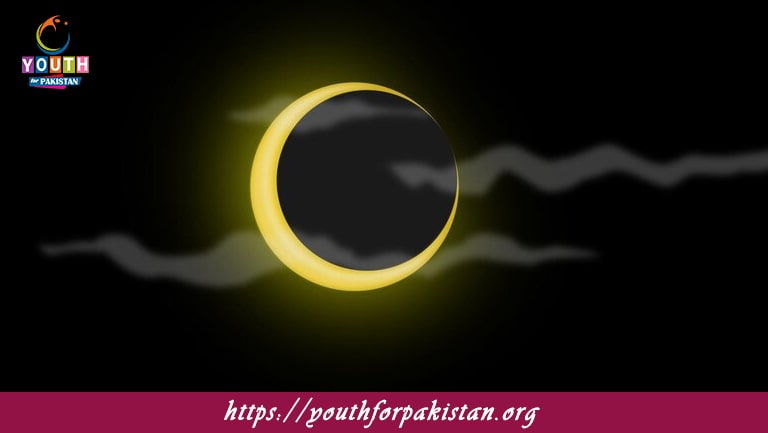Welcome to the Lunar Eclipses MCQs with Answers. In this post, we are sharing Lunar Eclipses Multiple Choice Questions and Answers in Astronomy section for various competitive exams in Pakistan. Each question offers a chance to enhance your knowledge regarding Lunar Eclipses online MCQs Test.
During a lunar eclipse, the Moon passes through what part of Earth’s shadow?
a) Penumbra
b) Umbra
c) Antumbra
d) Core
What type of lunar eclipse occurs when only a part of the Moon enters Earth’s umbra?
a) Total lunar eclipse
b) Partial lunar eclipse
c) Penumbral lunar eclipse
d) Annular eclipse
A total lunar eclipse is also commonly referred to as what?
a) Blue Moon
b) Black Moon
c) Blood Moon
d) Supermoon
Which phase of the Moon must it be for a lunar eclipse to occur?
a) New Moon
b) Full Moon
c) First Quarter
d) Third Quarter
What causes the reddish color of the Moon during a total lunar eclipse?
a) Reflection of Mars’ light
b) Light scattering in Earth’s atmosphere
c) Moon’s surface material
d) Shadows from nearby planets
How long can a total lunar eclipse last?
a) A few seconds
b) 1 hour and 40 minutes
c) 24 hours
d) 3 days
What is the term for the outer part of Earth’s shadow during an eclipse?
a) Antumbra
b) Umbra
c) Penumbra
d) Perigee
Which of the following is NOT a type of lunar eclipse?
a) Penumbral eclipse
b) Total lunar eclipse
c) Annular lunar eclipse
d) Partial lunar eclipse
How often do lunar eclipses occur?
a) Once a month
b) 2-4 times a year
c) Every 10 years
d) Only during solar eclipses
What type of lunar eclipse occurs when the Moon passes only through Earth’s penumbra?
a) Total lunar eclipse
b) Partial lunar eclipse
c) Penumbral lunar eclipse
d) Solar eclipse
Which of the following is necessary for a lunar eclipse to occur?
a) Earth is between the Sun and Moon
b) Moon is between the Sun and Earth
c) The Moon is in its new phase
d) The Sun is directly overhead
What is the longest total lunar eclipse recorded in recent history?
a) 45 minutes
b) 3 hours and 20 minutes
c) 1 hour and 43 minutes
d) 2 hours
Which ancient civilization recorded one of the first known lunar eclipses?
a) Egyptians
b) Chinese
c) Romans
d) Mayans
What happens to the appearance of the Moon during a penumbral lunar eclipse?
a) The Moon disappears
b) The Moon turns red
c) The Moon slightly darkens
d) The Moon becomes brighter
Which event can never occur during a lunar eclipse?
a) New Moon
b) Solar eclipse
c) Full Moon
d) Meteoroid impact
What is the primary difference between a solar and a lunar eclipse?
a) Lunar eclipse occurs during a Full Moon, solar during a New Moon
b) Solar eclipse lasts longer
c) Lunar eclipses are only visible at night
d) Solar eclipses are less common
What is the maximum number of lunar eclipses that can occur in a year?
a) 1
b) 2
c) 4
d) 7
During which phase is the Moon fully visible but may be eclipsed?
a) New Moon
b) Waxing Crescent
c) Full Moon
d) Waning Gibbous
Why don’t lunar eclipses occur every month during a Full Moon?
a) The Sun blocks the eclipse
b) The Moon’s orbit is tilted
c) The Earth’s atmosphere prevents it
d) Lunar eclipses only happen at night
Which eclipse can be seen by more people at once, a lunar or solar eclipse?
a) Solar eclipse
b) Lunar eclipse
c) Both are equally visible
d) Neither is visible to the naked eye
What type of lunar eclipse can last the longest?
a) Total lunar eclipse
b) Partial lunar eclipse
c) Penumbral lunar eclipse
d) Hybrid eclipse
Which part of Earth’s shadow causes the total darkness during a total lunar eclipse?
a) Penumbra
b) Umbra
c) Antumbra
d) Outer shadow
How does a partial lunar eclipse differ from a total lunar eclipse?
a) The Moon doesn’t turn red
b) Only a portion of the Moon enters Earth’s umbra
c) The Moon is further away from Earth
d) The eclipse is invisible to the naked eye
Which of the following factors determines how red the Moon appears during a total lunar eclipse?
a) The Moon’s distance from Earth
b) Amount of dust and pollution in Earth’s atmosphere
c) The speed of the Moon’s orbit
d) The temperature of the Earth
What is the name for the point when the Moon is farthest from Earth during its orbit?
a) Perigee
b) Apogee
c) Eclipse point
d) Nadir
What phenomenon occurs when the Sun, Earth, and Moon are perfectly aligned?
a) Eclipse
b) Supermoon
c) Equinox
d) Lunar cycle
What is the Saros cycle?
a) A period of 18 years after which lunar and solar eclipses repeat
b) The cycle of lunar phases
c) The pattern of the Moon’s orbit
d) The time it takes for the Moon to orbit Earth
What celestial event coincided with the total lunar eclipse in January 2019?
a) Solar flare
b) Supermoon
c) Meteor shower
d) Venus transit
Who can observe a lunar eclipse?
a) Only people in certain parts of the world
b) Only people on the night side of Earth
c) Only those with telescopes
d) People in daylight
Which type of eclipse happens more frequently?
a) Solar eclipse
b) Lunar eclipse
c) Both happen equally
d) Hybrid eclipse
If you are interested to enhance your knowledge regarding Physics, Chemistry, Computer, and Biology please click on the link of each category, you will be redirected to dedicated website for each category.








